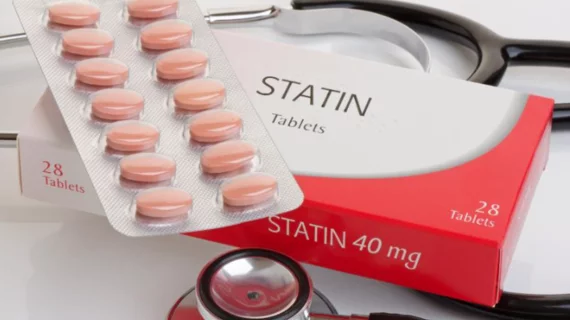More than ⅓ of statin patients fail to achieve healthy LDL-C
More than one-third of statin patients still fail to reach healthy LDL-cholesterol levels a year and a half after initiating treatment, leaving them vulnerable to adverse CV events and thousands of dollars in medical bills, according to a report in the Journal of Managed Care & Specialty Pharmacy.
Despite statins’ long-standing reputation as a therapy that’s both cost-conscious and effective, studies suggest just 20% to 64% of patients taking them actually achieve healthy levels of LDL-C, principal investigator Ross J. Simpson, Jr., MD, PhD, and colleagues said in the journal. As a whole, 29% of heart patients eligible for statins aren’t being treated with them, either because of issues with health insurance or access to quality care.
“The proportions of patients not achieving threshold LDL-C levels indicate an unmet preventive need,” Simpson, a cardiologist at the University of North Carolina, and co-authors wrote. “With statin therapy increasingly guided by cardiovascular risk assessment rather than specific thresholds of ‘normal’ cholesterol, the scale and scope of statin treatment is expanding. Consequently, the unmet need for prevention and treatment is likely to grow.”
Simpson and his team looked at electronic health records from the Indiana Network for Patient Care, considering data from 89,267 patients across the state who had initiated statin therapy between 2012 and 2016. LDL-C values were recorded 6 to 18 months after patients initiated their therapy.
The researchers found 30,083 patients in the study—33.7% of the group—hadn’t achieved therapeutic levels of LDL-C (considered under 100 mg/dL) since they started taking statins. In a high-risk subgroup held to a stricter LDL-C standard of less than 70 mg/dL, 58% of patients failed to meet the endpoint.
Looking just at patients who adhered closely to their therapy regimens, defined as a medication possession ratio of 80% or higher, the authors said 24% of the general population and 51% of the high-risk subgroup failed to meet their respective thresholds. Still, 64% of patients above the threshold in both groups fell within 30 mg/dL of their respective target LDL-C levels.
Hypothetically, if patients who didn’t achieve healthy LDL-C were provided with treatment to adequately lower their cholesterol levels, the study estimated the general cohort could save $1,455 per patient in medical fees and avoid 1,173 CVD events over 10 years—a potential relative risk reduction of 14.8%. The high-risk cohort could save $1,902 per patient at a relative risk reduction of 15.7%.
“We estimated costs for treating potentially avoidable CV events conservatively,” Simpson et al. wrote. “CVD treatment costs in patients with hypertension and diabetes are higher than in patients without, leading us to likely underestimate potential cost savings. In addition, we did not consider ongoing treatment costs for CVD events beyond the first year.”
Since the study focused on the broader population of Indiana rather than a single health system, Simpson and his team said their findings could have significant public health implications. They said the study can also act as evidence for healthcare providers and insurance agencies that more aggressive therapy for “bad” cholesterol could considerably improve patient care and reduce costs.
“This study has shown a large and potentially important gap between reasonable LDL-C thresholds and actual LDL-C levels achieved by contemporary statin regimens with a large, diversified patient population in Indiana,” the authors wrote. “Achieving these thresholds could translate into substantial CV risk reduction and cost savings.”

